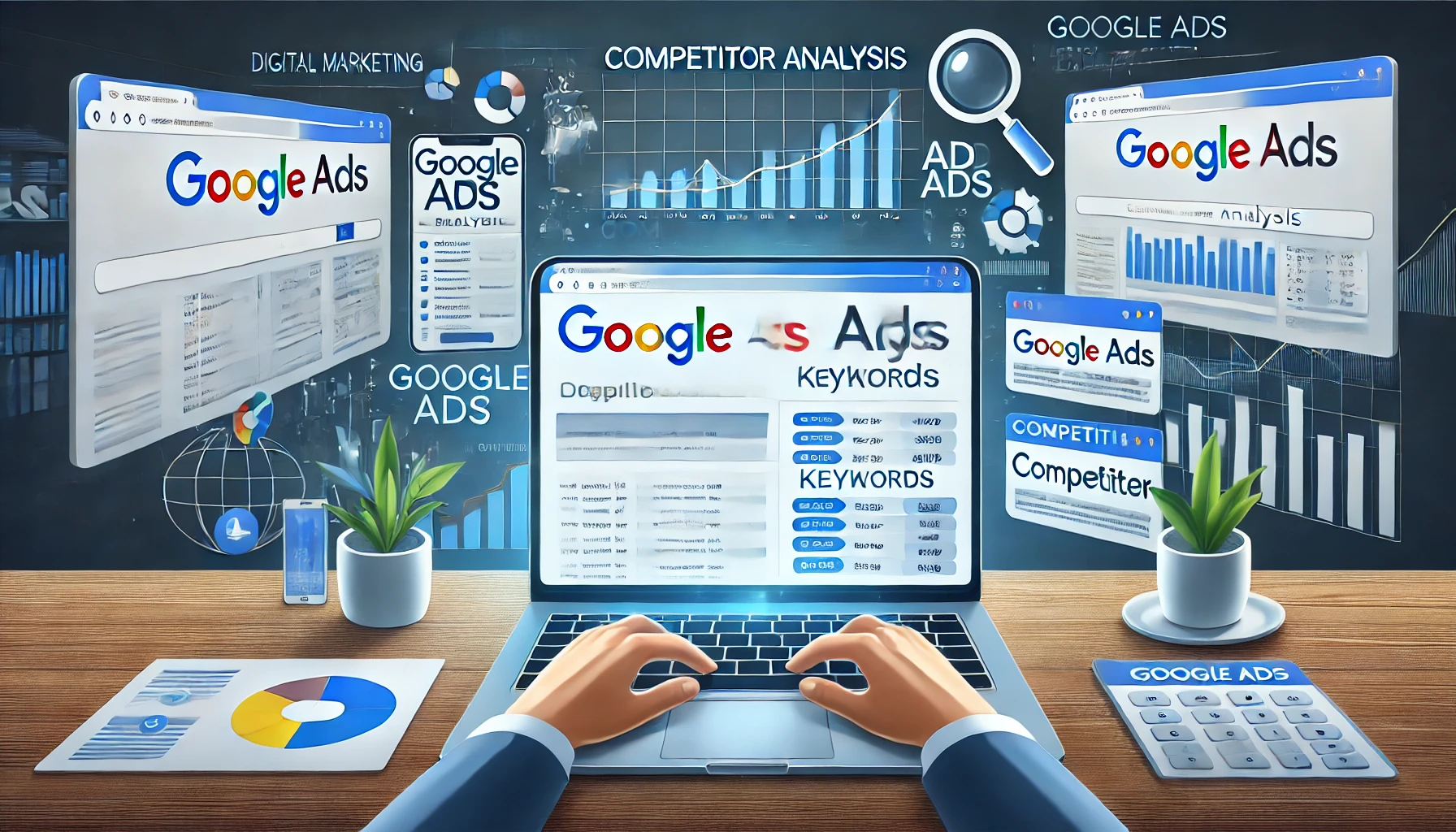A comprehensive Google Ads competitor analysis equips your agency with vital insights into the competitive environment, enhancing your ability to craft sharper ad campaigns. Discover five impactful tactics to uncover competitor strategies, with guidance on tracking and reporting to demonstrate how your campaigns excel.
In managing client advertising strategies, conducting a competitor analysis on Google Ads is indispensable. Understanding competitors’ online advertising landscapes empowers your agency to create persuasive ad copy, design visually compelling assets, and optimize ad spend helping you deliver effective messages to your clients’ target audiences, increase conversions, and drive results.
Keep reading for five strategic tactics to dissect your clients’ competitors’ Google Ads approaches and reporting tips to showcase how your ads stack up.
Topics Covered:
The Importance of Google Ads Competitor Analysis
Google Ads Competitor Analysis for Agencies Challenges.
Five Steps to Effective Google Ads Competitor Analysis
Ten Key Google Ads Metrics to Track
How to Report on Google Ads Success
Google Ads Competitor Analysis as a Catalyst for Growth
Why Google Ads Competitor Analysis Is Essential
Producing results for clients extends beyond creative ad copy, sharp keyword targeting, and bold visuals. Conducting a Google Ads competitor analysis empowers your team to outmaneuver competitors by unveiling their tactics and weak points, allowing you to refine your strategies. Without this analysis, your efforts remain mere speculation. Knowing your clients’ competitors’ strengths and weaknesses enables you to craft campaigns that stand out, seizing missed opportunities and fine-tuning every aspect of ad performance.
“In a competitive market, quick results are challenging. We adapt through thorough competitor analysis to identify ways to stand apart.” – Omar Muñoz, Co-Founder, REInvestor SEO
While essential, Google Ads competitor analysis presents challenges, especially for agencies managing multiple clients across industries. Challenges include:
Limited visibility beyond publicly available data
Difficulty pinpointing competitor keywords and bids
Keeping up with evolving ad copy and messaging
Limited insight into competitors’ lead quality and conversion rates
Resource and time management across multiple client campaigns
Balancing these challenges with your agency’s priorities is crucial before launching into competitor analysis.
Leveraging Your Agency’s Objective Perspective
As a third-party partner, your agency’s strength lies in an objective viewpoint. Unlike your clients, you can evaluate competitors’ strategies impartially, using insights to bolster your clients’ ad performance. This unbiased perspective allows you to identify key differentiators and apply strategic improvements to enhance Google Ads campaigns.
Five Steps to Execute a Comprehensive Google Ads Competitor Analysis
The strongest ad strategies are data-driven. Here’s how to conduct a well-rounded Google Ads competitor analysis:
1. Use Google Ads Auction Insights
Google Ads Auction Insights is invaluable for competitive analysis, revealing key players targeting the same keywords and ad spaces. Access Auction Insights through the client’s Google Ads account to understand keyword overlap and competitors’ ad positioning.
2. Examine Competitors’ Keyword Strategies
Google Ads Keyword Planner provides insights on competition levels, search volume, and CPC estimates for relevant keywords, allowing you to capitalize on low-competition, high-traffic terms. Tracking trends in long-tail keywords also helps your clients stay competitive.
3. Explore the Google Ads Transparency Center
The Google Ads Transparency Center offers extensive information on competitors’ ads, providing details like formats, regions targeted, and messaging. These insights aid in developing more tailored and strategic campaigns for clients.
4. Evaluate Competitors’ Landing Pages
Analysis shouldn’t stop at the ad itself; examining competitors’ landing pages provides insights into their conversion flow and calls to action. Observing user-generated content and other features on competitors’ pages can inspire improvements to your clients’ pages.
5. Monitor Competitor Ad Performance Over Time
A snapshot analysis of competitors’ ads offers limited value. Instead, consistently track ad copy, graphics, and formats, adapting your clients’ campaigns based on competitors’ adjustments to stay ahead.
Ten Essential Google Ads Metrics to Track
To maintain competitive campaigns, these metrics are crucial:
Click-Through Rate (CTR): Measures engagement on ads.
Conversion Rate: Tracks clicks leading to actions.
Cost Per Click (CPC): Determines ad spending per click.
Impression Share: Shows ad visibility relative to potential impressions.
Cost Per Conversion: Indicates spending per lead.
Quality Score: Reflects keyword and ad relevance.
Average Position: Helps compare ad placements.
Ad Spend: Total Google Ads spending.
Return on Ad Spend (ROAS).
Bounce Rate: Percentage of users leaving landing pages without further interaction.
These metrics create a comprehensive picture of campaign performance, guiding adjustments to boost conversions.
Reporting Google Ads Success
After launching campaigns, providing clients with clear reporting on performance is essential. Effective reporting highlights your agency’s value, validating the impact of its advertising strategies.
The Role of Superior Reporting Tools
Google’s tools, along with third-party options, simplify data tracking and analysis.
The Growth Potential of Google Ads Competitor Analysis
Google Ads competitor analysis not only shapes stronger ad strategies but also deepens clients’ trust in your agency. With a keen awareness of competitors’ tactics, your team can craft data-driven campaigns that outshine the competition, delivering measurable results.
